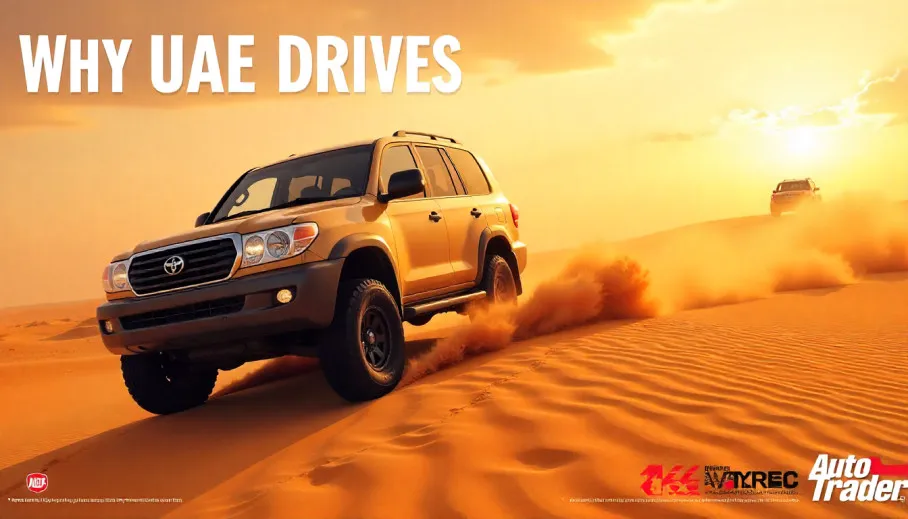Why UAE Desert Drives Are Destroying Transmissions — and How to Avoid It
Weekend desert runs have become a lifestyle in the UAE — convoy meet-ups at sunrise, flagpoles flying, sand ladders strapped on the roof, and the sound of turbos echoing in Al Faya, Al Qudra, and Liwa.
But behind the thrill, there’s a harsh mechanical truth:
Desert driving is quietly killing transmissions — especially on modern SUVs.
And most drivers don’t realise it until a workshop hands them a bill bigger than the car payment.
So why is this happening? And how can you enjoy the dunes without sacrificing your gearbox?
Let’s break it down.
1. Sand = Resistance + Heat
Sand may look soft and harmless, but mechanically? It’s brutal.
- Your wheels constantly dig and claw for traction
- The transmission keeps hunting gears
- Heat builds up fast
Automatic transmissions hate heat. Add heavy throttle, deep sand, and long dune climbs… and you get:
- Overheating ATF (transmission oil)
- Clutch pack wear
- Burnt solenoids
- Gear slipping
Warning signs:
- Car feels weaker climbing dunes
- Delayed shifting
- Burning smell
- "Transmission Overheat" alert (if you’re lucky)
2. Incorrect Drive Modes
Modern SUVs spoil us with buttons — “Sand Mode”, “Low Range”, “Traction Off”, etc.
But many drivers think 4H = desert-ready. Nope.
Common mistakes:
- Driving dunes in Auto AWD
- Forgetting Low Range in steep bowls
- Leaving traction control ON
- Using Eco or Normal mode (please no)
Result?
Transmission works harder than it should, overheats, and fails earlier.
Tip:
Steep dunes + technical climbs = 4L
Long open flats = 4H (Sand mode)
3. CVTs are Suffering the Most
CVTs in the desert are like wearing dress shoes to a hiking trail — possible, but painful.
CVT-equipped cars (some Nissans, smaller Mitsubishis, etc.) often struggle more due to:
- Belt-slip risks
- Overheating faster
- Weaker torque handling
Yes, people do take X-Trails into the dunes. But should they? Let's just say… not regularly.
4. Heavy Mods With No Supporting Cooling
Big tires, lift kits, roof tents, steel bumpers — great for photos, terrible for transmission temps if you don’t upgrade cooling.
Extra weight + drag = more load.
More load = more heat.
If you're modifying for desert adventures, a transmission cooler is not a luxury — it's survival.
5. Poor Maintenance
People think desert damage is dramatic — but gearbox death is usually slow and silent:
- Skipping transmission oil change
- Using cheap ATF
- Not checking for overheating signs
A lot of 4x4s fail not in the dunes, but two months later, when the clutch packs finally give up.
How to Enjoy Desert Drives Without Killing Your Transmission
Here’s the cheat sheet:
Use Sand Mode / Off-Road Mode
Switch to 4L when climbing steep bowls
Lower tire pressure (10–15 psi for most SUVs)
Install transmission cooler if modified
Take cool-down breaks — especially midday
Keep RPM controlled, no panic high-revving
Service your transmission on schedule
Go in convoys — stuck spinning = heat = damage
And yes — don’t take soft-roaders to Liwa dunes unless you want to become viral recovery video material.
Which Cars Handle UAE Desert Best?
Models famously resistant to desert stress include:
Modern German SUVs? Amazing on road… selective in the dunes.
Final Word
The desert doesn’t break cars — driving techniques and poor prep do.
Treat your transmission like your passport: one careless move and trip over
Drive smart, cool your gearbox, and Dubai's dunes will reward you — not punish your wallet.
Explore More:
- Are Manual Cars Going Extinct in Dubai?
- Desert-Proofing Your Car: Essential Mods for Dubai’s Scorching Climate
Closing Paragraph
Whether you're upgrading your 4x4 or browsing reliable desert-ready SUVs, the pre-owned market in Dubai offers incredible value — especially for Land Cruisers, Patrols, and Pajeros built for UAE terrain. Browse trusted used cars for sale in Dubai and find your next off-road machine at Auto Trader UAE:

